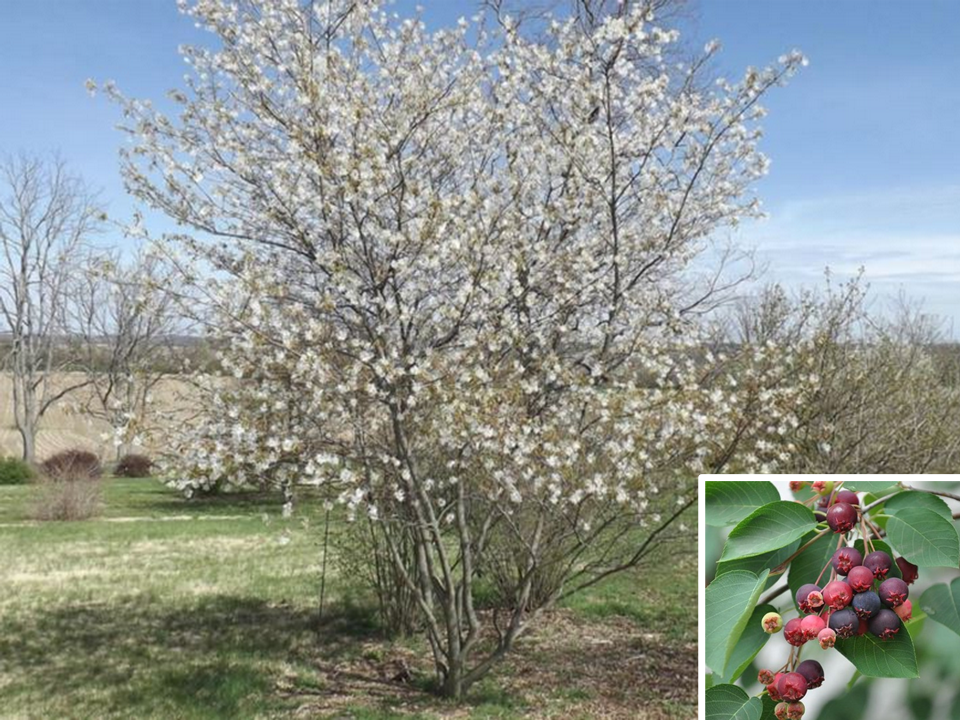Serviceberry Tree
Amelanchier arborea
Click here to download a PDF of this plant information page (for printing).

Sun Exposure: Sun, Part Sun
Season of Interest: Spring, Summer, Fall
Bloom Time: March - April
Bloom Color: White
Height: 15 to 20 ft.
Spread: 10 ft.
Spacing: 15 ft.
Water Needs: Average
Maintenance: Prune for shape
Soil Type: Clay, Loam, Sandy
Soil pH: Acidic, Neutral
Soil Drainage: Well drained
Pests: Squirrels eat the fruit
Diseases: Leafspot, Cedar rust, Downy mildew
Wildlife: Bees, Butterflies, Birds, Small mammals

Description:
Serviceberry is a deciduous, small tree or shrub with a native habitat covering the eastern half of North America. It can be found throughout Tennessee and is hardy in Zones 4 to 9. The 'service' in the common name serviceberry refers to the plant usually being in flower around Easter. Serviceberry has a narrow, upright, rounded crown of medium-textured foliage with an irregular branching habit. It has an understated gracefulness that provides year-round interest in the landscape. The showy, white flowers typically appear from mid-March until early April, and are borne in pendulous racemes. As mentioned before, the flowers are extremely ornamental, but the bloom period is short in duration (usually about two weeks). The deciduous foliage is elliptical in shape, of medium texture, and has a medium to dark green color. The edible fruit matures in two to three months to small, sweet, red to purple berries that are relished by wildlife. The fall color is excellent with varying shades of yellow to orange to red. Another feature worth mentioning is the showy bark that is smooth and grayish in color with vertical ridges. The young twigs are an attractive olive-green color. Serviceberry is often seen as a multi-stemmed shrub, but it also looks great pruned into a small tree to accentuate the ornamental bark. For more information see:
plants.ces.ncsu.edu/plants/amelanchier-arborea
Care and Growing Tips:
Water serviceberries whenever the top 3 inches of soil feel dry to the touch during their first two years after planting. Established plants are drought-tolerant. Spread a 2-inch layer of organic mulch, such as chipped bark or pine needles, around the trees to discourage weeds and keep the soil moist. Keep the mulch away from the trunk.
Feed serviceberries with organic 5-3-3 fertilizer in spring and fall at the rate of 1 cup of fertilizer for each foot of canopy. Serviceberries often sprout root suckers. Removing them prevents the plants from becoming excessively bushy. These plants seldom require hard pruning. Trim them lightly in late winter to encourage dense new growth and remove damaged or crossed branches.